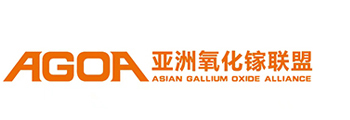

【Epitaxy Papers】Enhanced near ultraviolet (UV) photodetection using PLD-grown ZnO/Ga₂O₃/ZnO epistructure on n-Si (100) substrate
日期:2025-09-24阅读:231
Researchers from the University of Mumbai, have published a dissertation titled "Enhanced near ultraviolet (UV) photodetection using PLD-grown ZnO/Ga2O3/ZnO epistructure on n-Si (100) substrate" in Journal of Applied Physics.
Abstract
Advancement of room-temperature ultraviolet (UV) and near-UV photodetectors is crucial for the realization of next-generation optoelectronic interconnects. Semiconductors namely zinc oxide (ZnO) and gallium oxide (Ga2O3) have garnered significant attention due to their exceptional physical properties, availability, and cost-effectiveness. The ultra-wide bandgap of Ga2O3 (∼4.7 eV) enables intrinsic sensitivity to the deep UV radiation, whereas the wide bandgap of ZnO (∼3.37 eV) along with its high exciton binding energy (∼60 meV) that promote efficient excitonic emission at room temperature and can record a UV response under ambient conditions. Therefore, it is possible to sense deep UV along with the UV at room temperature by combining both these materials. Hence, the present study reports the combination of these materials in the form of epistructures, namely, ZnO/Ga2O3/ZnO deposited on n-Si substrates using pulsed laser deposition. The epistructures were characterized structurally, optically and electrically using the respective technique for the quality. The optimized heterostructures were used to fabricate single-pixel photodetectors (500 μm diameter each) following a robust and scalable fabrication process. A variation in transport characteristics recorded under dark and near-UV (403 nm) illumination confirmed its UV detection capability. The electrical measurements carried across such multiple devices revealed excellent uniformity in UV detection and operational stability, underscoring the reliability of both, i.e., synthesis and fabrication processes followed. For 403 nm of excitation wavelength with a minimum intensity of 5000 lux, the devices operated at 2 V demonstrate a photoresponsivity of 0.0155 A/lux, an external quantum efficiency of 0.045, and a specific detectivity of 2.5 × 106 V/lux. To explain the results, photodetection mechanism is proposed based on the Anderson model, which is extended as per the epistructures used. The results reported herewith highlight potential use of ZnO/Ga2O3/ZnO epistructures as one of the conceivable approaches to enable next-generation UV photodetectors and interconnect technologies.
DOI:
https://doi.org/10.1063/5.0281000


